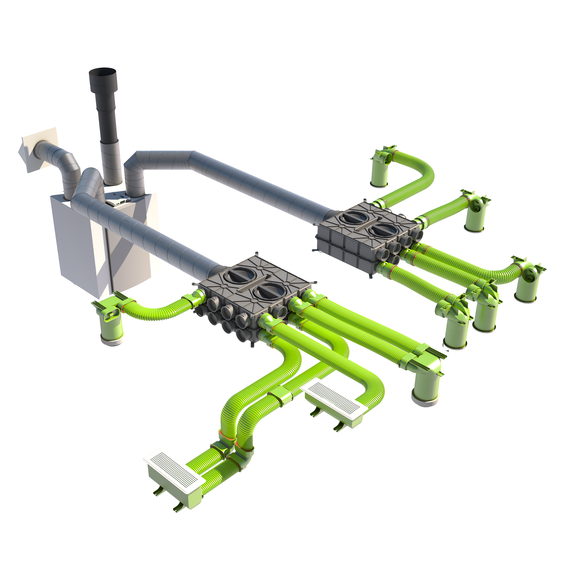Detailed information
The installed performance of a ventilation unit depends upon the quality of the ductwork system. Ductwork systems are perfectly airtight on the screen or paper, but not installed. If a ductwork system leaks, then the fans have to work harder to overcome the leakage and ventilate the rooms at the design/hygienic flow rate. The higher the flow rate, the higher the pressure loss = more fan energy use and sound production.Characteristics of high performance ductwork systems:
- Low air velocity to minimise sound production
- Low system pressure loss to minimise fan energy use and sound production
- Air-tight to minimise fan energy use and sound production
- Insulated to minimise the risk of condensation
- Minimal transfer of sound/noise between rooms
- Easy, quick, safe and clean installation
- Commissioned correctly
- Healthy and safe
- Easy to clean

